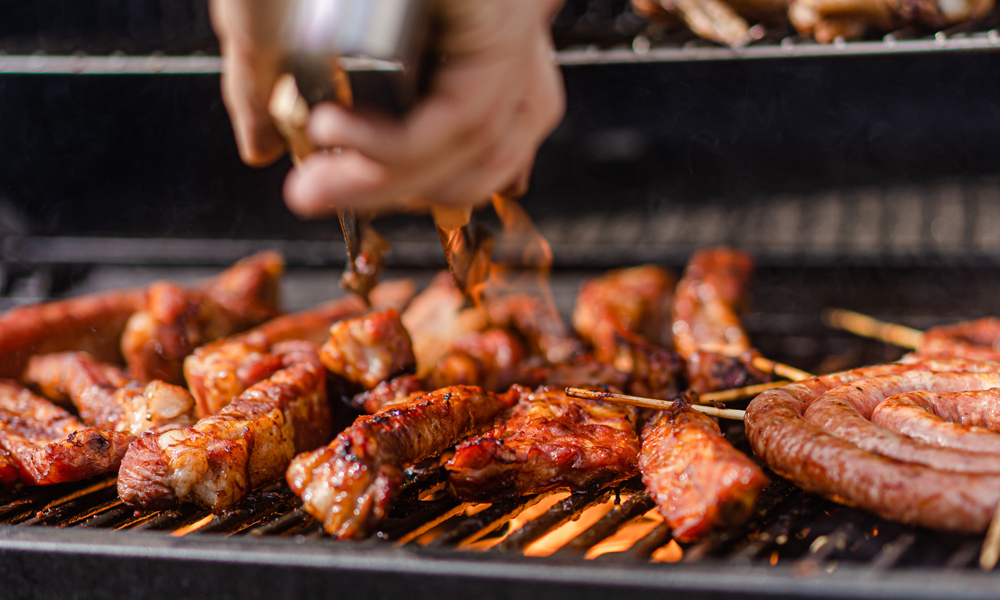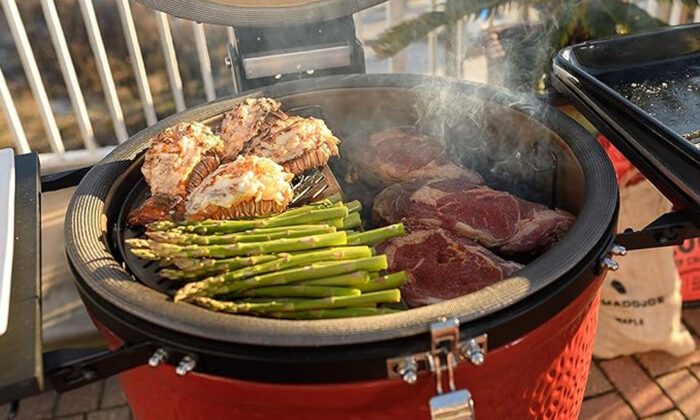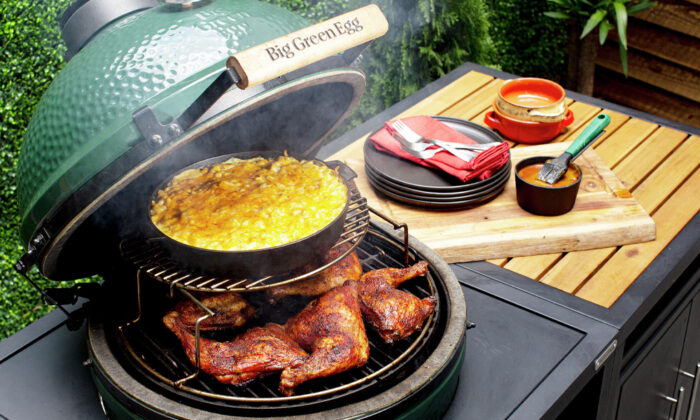We’re under no illusions that some of our readers are better backyard chefs than we are. This article isn’t for those guys. We appreciate the clicks, but you’re going to go through this article and roll your eyes at how obvious you consider some of these.
Instead, we’re writing for those of us who can put together a serviceable menu of hamburgers, hot dogs, and corn on the cob but are looking to branch out. These are the 10 best tips to help you master your backyard grill.
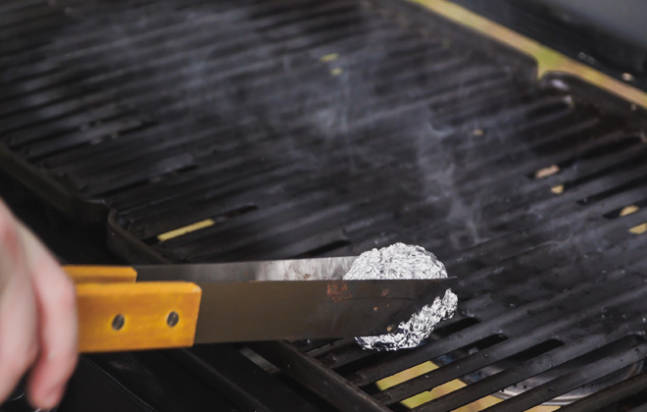
Aluminum Foil Cleans in a Pinch
There will inevitably be times you won’t have access to your usual grill cleaning utensil. When that’s the case, let the grill heat up, rip off a big piece of aluminum foil and ball it up into a (literally) rough sphere, then use it as you would your scraper. We also recommend holding the foil with your tongs. As the foil gets clogged up with grease and char, roll it to a cleaner side and keep scraping. Repeat as necessary. You’ll be surprised with how much crap you scrape away with the improvised solution.
Spring for Actual Wood Charcoal
We’ve had really good meals cooked over charcoal briquettes, so there’s nothing really wrong or morally objectionable about them. We just find that using real wood charcoal makes for more consistent heat and a cleaner taste. There’s obviously a price difference and if you use a charcoal grill frequently, you certainly run the risk of having the price difference get on top of you. If you can afford it, we advocate taking the leap.

Give Your Grill Time to Preheat
This is a little more relevant to charcoal grills, but it holds for gas grills too. Multiple parts of your grill need time to come to temperature, and for different reasons. For charcoal, it’s simply a question of the heat source actually being a heat source. If you prematurely throw food over charcoal, it’ll cook unevenly, if at all. A gas grill could potentially cook unevenly too, though it needs a lot less time to get where it needs to be. A hot grill is also much easier to scrape or brush clean, if you want to look at it purely from a grease accumulation perspective.
Skewers Work Better in Pairs
It’ll double the number of skewers you go through, but the frustration saved will be reason enough. When there’s the single skewer, everything rotates around the middle as you flip your kebabs, especially as the food starts to shrink over the heat. The double skewer keeps everything in place and stops your barbecue from turning into a lesson on rotational friction.
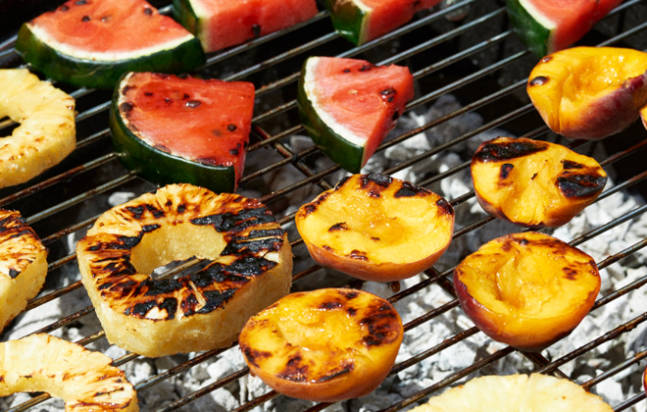
Fruit is Your Best Dessert Friend
One of the only complaints we have about barbecue season is the lack of desserts. There are probably recipes for cakes or cookies you can bake in your grill, but with how precise baking tends to be, we’re not super comfortable with adding in the kind of approximations that come with the standard backyard grill. It’s better to leave that work in the kitchen.
Still, you want something sweet, which is why we’re happy to report that grilled fruit is far more than a viable option. Two of our personal favorites are grilled pineapple and peach halves. Their natural sugars caramelize over the intense heat to create a super tender, juicy treat that has satisfied even our pickiest guests.
Avoid Overhandling Your Food
When we say overhandling, we’re mainly talking about flipping too often or squeezing. You’re squeezing meat juices into the heat source. That might smell good or get a nice plume of smoke going, but every time you do that, you make the meat that much drier, not to mention interrupt those beautiful grill marks. Trust the process enough to leave your food alone for a while.
As a secondary effect, when you keep taking the lid off the grill to flip or jostle, you’re letting a ton of heat shoot right up into the air around you. We’ve actually seen our grill drop a full 100 degrees after opening and closing the top. That means you’re not actually doing as much cooking as you think you are.
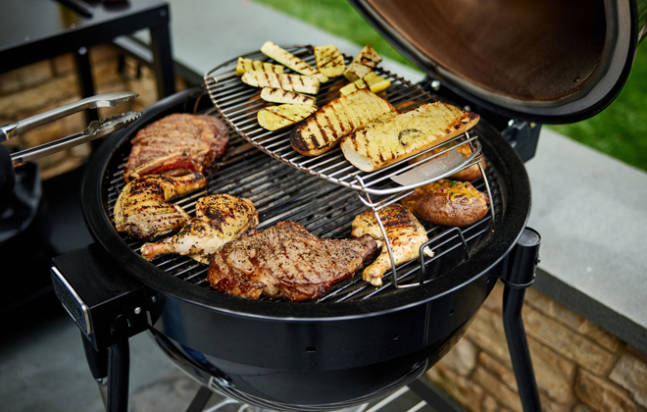
The Top Shelf is Designed as a Warming Rack
We’ve had a few conversations with friends about the different parts of our grills and what they’re for. This is partially because grill manufacturers keep including frivolous features that we never ever use, like the burner they have on the side for boiling water, as if we don’t have a perfectly good stove inside. It’s also partially because we locked ourselves into some unfortunate functional fixedness and literally couldn’t conceptualize something we could cook on the top rack. Well, we had a revelation that was actually just us taking the long way to get to the obvious.
The top rack is a warming rack. Use it when you finish cooking something but aren’t ready to serve the meal yet.
Take Things Off the Grill a Little Early
This is one lesson bakers share with grillmasters. Cakes and bread continue to cook after you take them out of the oven. The same goes for anything on a grill.
For some things, it doesn’t matter as much. There won’t be a huge difference between your vegetables from when you take them off to when you eat them. For meat, it can be the difference between medium rare perfection and medium to medium well acceptability. The latter’s not going to be bad, but it’s going to be an unpleasant surprise when you take a masterfully cooked steak off, then cut into something less masterful a few minutes later. Unfortunately, you’re going to have to learn this one by feel. There’s no scientific way we know of to calculate exactly how early you need to take it off. Let experience guide you and give yourself a little leeway when you don’t get it right.

Let Meat Rest, Before and After
Cooking, like most things, gets a lot easier once you know the scientific reasons for things. For example, it doesn’t sound like it should make a difference whether you cook steak directly from the fridge or from room temperature. But once you find out that cooking from the fridge creates the kind of temperature gradients inside the meat that disrupt even cooking and that bringing the steak up to room temperature makes for better cooking consistency, you’ll find the half hour you need to let those steaks warm up.
The same goes for letting a steak rest for five minutes or so after you take it off the grill. You might want to chow down on the steak the minute you pull it from the heat, but letting it sit allows the juices to evenly disperse throughout the meat and actually makes for a juicier steak overall. Suddenly, being patient doesn’t seem so hard.
Those Park Barbecues Aren’t for Decoration
Right up front, it should be said that those park grills aren’t for big complicated productions. You’re not going to get a perfectly grilled steak or a tender rack of ribs. But if you keep your expectations at a reasonable level and come in with a few burgers, some hot dogs, maybe some chicken, and a handful of kebabs, you’ll end up with a good meal in a relaxing green space, likely surrounded by friends and lawn games.
This is one of those things we had to learn during the pandemic. For whatever reason, we never fully trusted those grills. But when we were forced to actually use them, they weren’t nearly as bad or derelict as we originally thought.

